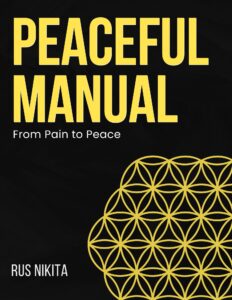In the whirlwind of modern life, finding moments of stillness and presence can seem almost impossible. We’re constantly bombarded with notifications, responsibilities, and the endless to-do lists that seem to multiply overnight.
Yet, it’s precisely in these moments that the power of stillness and presence becomes most vital. These aren’t just skills to be learned, they are lifelines in a sea of chaos, helping us anchor ourselves to what truly matters.
Stillness and presence are not about doing less or avoiding life’s demands. Instead, they are about engaging more fully with each moment, approaching our daily lives with intention and awareness.
This shift allows us to move from merely existing, going through the motions of our daily routines, to truly living, where every action and interaction is imbued with purpose and meaning. It’s about transforming the mundane into the meaningful, the rushed into the restful.
Our culture often misinterprets stillness. It’s seen as inactivity, laziness, or worse, a waste of time. But in reality, stillness is a deliberate practice of creating space to connect with ourselves on a deeper level. This connection fosters clarity, reduces stress, and enhances our overall well-being.
It’s about finding that quiet space within ourselves where we can observe our thoughts and emotions without judgment, and let go of the constant need to do, to achieve, to keep up. Instead of always pushing forward, stillness allows us to reset, recharge, and gain a fresh perspective.
One of the greatest challenges we face today is our inability to slow down. We’re conditioned to equate our worth with how much we can get done, how many tasks we can check off our list, or how many goals we can achieve. In this constant rush to do more, we often lose sight of what truly matters.
We become disconnected from ourselves, from the people around us, and from the world at large.
This disconnection has serious consequences for our mental and physical health. Studies have shown that chronic stress – the kind that comes from always being “on” can lead to a host of health problems, including heart disease, diabetes, and depression.
The good news is that we have the power to change this. By embracing stillness and presence, we can create a space where our minds and bodies can rest, recover, and thrive.
Stillness is not just a physical state; it’s a mental and emotional one as well. It’s about creating an internal space where we can observe the flow of our thoughts and emotions without becoming entangled in them.
This practice of observing without reacting allows us to see things more clearly and respond more thoughtfully. In stillness, we find the clarity and insight we need to navigate life’s challenges with grace and resilience.
The benefits of stillness are supported by a growing body of scientific research. Studies have shown that mindfulness practices, which include stillness, can lower cortisol levels, reduce inflammation, and even change the structure of our brains.
For example, research conducted at Harvard University found that regular mindfulness meditation can increase the density of gray matter in the brain, particularly in areas associated with memory, learning, and emotional regulation. This means that by practicing stillness, we are literally reshaping our brains to be more effective and adaptive in dealing with the challenges of everyday life.
Moreover, stillness has been shown to improve our ability to focus and concentrate. In a world where distractions are constant and attention spans are shrinking, the ability to focus has become a rare and valuable skill.
By practicing stillness, we train our minds to stay present and engaged, even in the face of distractions. This increased focus not only enhances our productivity but also allows us to engage more deeply with the people and activities that matter most to us.
Stillness also plays a crucial role in our emotional well-being. When we create space to observe our thoughts and feelings, we become more aware of our emotional patterns and triggers.
This awareness allows us to respond to our emotions with greater compassion and understanding, rather than reacting impulsively. Over time, this practice of emotional awareness can lead to greater emotional resilience, as we learn to navigate the ups and downs of life with greater ease and grace.
But how do we find stillness in a world that’s always on? It starts with small, intentional practices. Carve out a few minutes each day to sit in silence, away from the distractions of technology and to-do lists.
This can be as simple as sitting quietly with your morning coffee, taking a walk without your phone, or pausing for a few deep breaths before jumping into the next task. These moments don’t have to be long; what matters is the quality of the time spent, the intention behind it.
Creating a designated space for stillness in your home or office can also be helpful. This doesn’t need to be elaborate, a comfortable chair, a cozy corner, or a spot by the window can serve as your sanctuary for quiet reflection.
By associating this space with peace and relaxation, you train your mind and body to slow down and reconnect whenever you enter it.
As you begin to cultivate stillness, you might notice that it feels uncomfortable at first. In a culture that values constant motion and productivity, sitting still can feel counterintuitive, even anxiety-inducing.
This discomfort is a sign that you’re on the right track. It’s an indication that you’re stepping out of your comfort zone and challenging the ingrained habits of busyness and distraction.
Over time, this discomfort will give way to a sense of peace and clarity. You’ll begin to notice the subtle shifts in your mood, your energy levels, and your overall sense of well-being.
You might find that you’re more patient, more focused, and more present in your daily life. You’ll also likely notice that you’re better able to handle stress and navigate challenges with greater ease.
In addition to finding moments of stillness, cultivating presence is another key component of mindfulness. Presence is about fully engaging with whatever we’re doing in the moment. It’s the practice of giving our full attention to the task at hand, whether it’s a conversation with a friend, working on a project, or simply enjoying a meal.
When we are present, we are not distracted by thoughts of the past or worries about the future. We are fully immersed in the now, which allows us to experience life more deeply and meaningfully.
Being present enhances our relationships, as it enables us to listen more deeply, communicate more effectively, and connect on a more meaningful level.
This kind of engagement fosters trust and intimacy, enriching our social connections. It also allows us to respond with empathy and understanding, rather than reacting impulsively out of stress or distraction.
To cultivate presence, start by practicing mindfulness in everyday activities. This could be as simple as focusing on your breath while you wait in line, fully tasting and enjoying your food at mealtimes, or being fully attentive when speaking with someone.
Over time, these small acts of presence build up, transforming how you interact with the world around you.
One powerful way to cultivate presence is through mindful movement. Practices like yoga, tai chi, and even mindful walking help bridge the gap between body and mind, grounding us in the present moment.
These practices encourage us to move with intention, paying attention to the sensations in our bodies, the rhythm of our breath, and the flow of our movements. This not only improves our physical health but also calms the mind and reduces stress.
Mindful movement is not about achieving a certain level of physical performance or reaching a specific fitness goal. Rather, it’s about being present with your body as it is in the moment and moving in a way that feels nourishing and supportive.
This might mean slowing down, modifying a pose, or simply taking a few deep breaths as you move. The goal is to cultivate a sense of ease and flow, rather than striving for perfection or pushing yourself to the limit.
In addition to mindful movement, mindful breathing is another accessible practice for cultivating presence. Our breath is a constant companion, making it an ideal anchor for mindfulness. By simply bringing our attention to our breath, we can ground ourselves in the present moment, helping to calm the mind and reduce stress.
Whether you’re feeling overwhelmed, stuck in traffic, or need a moment of calm, taking a few deep breaths can help you return to the present and regain your sense of balance.
There are many breathing techniques to explore, from basic deep breathing to more structured practices like box breathing or alternate nostril breathing. Experiment with different techniques to find what resonates with you.
The key is to practice regularly, so mindful breathing becomes a natural part of your response to stress.
Engaging your senses is another effective way to cultivate presence. Our senses constantly receive information from the world around us, and by tuning into these sensations, we can ground ourselves in the present moment. For instance, when eating, fully immerse yourself in the experience by noticing the flavors, textures, and aromas of your food.
Or, when you’re outside, focus on the sounds of nature, the feeling of the sun on your skin, or the scent of flowers. These sensory experiences bring us back to the here and now, enhancing our awareness and appreciation of the present moment.
It’s also important to recognize that presence isn’t just about being mindful in moments of calm, it’s about staying engaged even in activity. Whether you’re working, exercising, or spending time with loved ones, the goal is to be fully present in whatever you’re doing.
This means putting aside distractions, focusing on the task at hand, and immersing yourself fully in the experience. By doing so, you not only improve your own well-being but also enrich the quality of your interactions and the outcomes of your efforts.
Presence in relationships can transform how we connect with others. When we are fully present with the people in our lives, we create space for genuine connection and intimacy.



